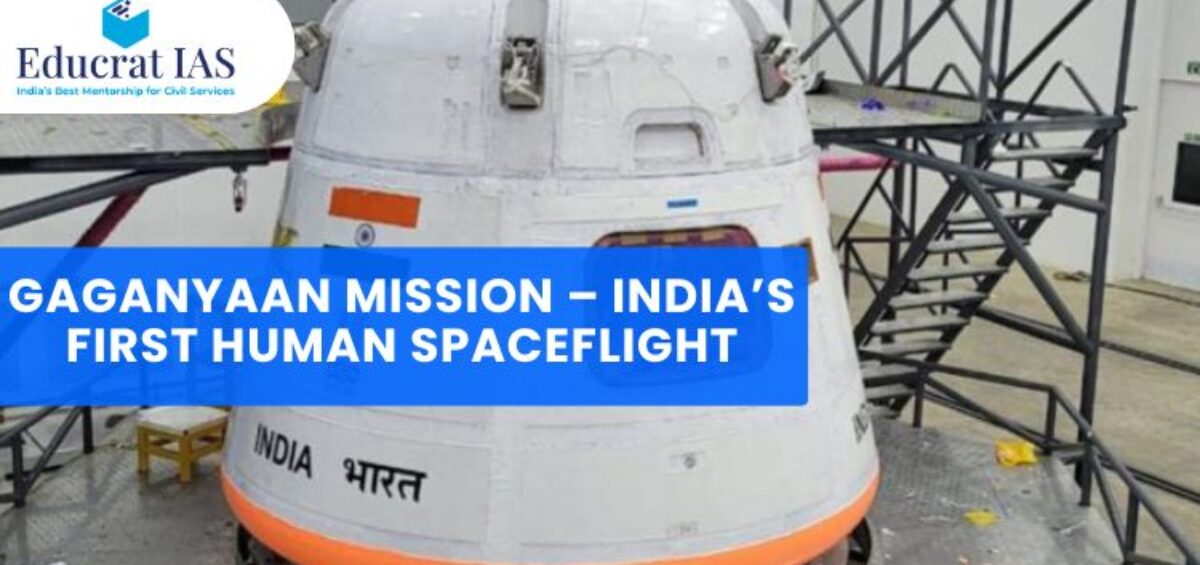From Dreams to Reality – India’s Leap into Space
Imagine the pride of seeing
India’s astronauts wave from space, knowing our country has joined the elite league of human spaceflight nations. The
Gaganyaan Mission is more than a space mission — it’s a milestone that will inspire generations, spark innovation, and showcase India’s technological strength to the world.
For UPSC aspirants, science enthusiasts, and every proud Indian,
Gaganyaan is history in the making.
What is the Gaganyaan Mission?
Launched by
ISRO (Indian Space Research Organisation), Gaganyaan aims to send a
crew of three astronauts into Low Earth Orbit (LEO) for a mission lasting up to
seven days.
Key facts:
- Targeted launch: 2025
- Crew capacity: Three astronauts
- Altitude: Around 400 km above Earth
- Budget: Approximately ₹9,023 crore
- Purpose: Showcase India’s human spaceflight capabilities
But wait — there’s more you should know… This mission will make India the fourth country after Russia, the USA, and China to achieve human space travel.
Why the Gaganyaan Mission Matters for India
Gaganyaan isn’t just about putting humans in space — it’s about
national prestige, technological self-reliance, and scientific advancement.
1. Boosting Space Technology
ISRO will master technologies like:
- Life support systems
- Crew escape systems
- Space medicine & safety protocols
2. Inspiring the Next Generation
Just like Chandrayaan-3 sparked curiosity in lunar science,
Gaganyaan will encourage STEM careers among young Indians.
3. Strategic & Global Standing
This mission strengthens India’s role in
global space collaborations and
commercial space missions.
Stages & Preparations of Gaganyaan
ISRO has planned
multiple test missions before the main crewed flight:
1. Uncrewed Test Flights
- Testing safety systems, re-entry heat shields, and module performance.
- First uncrewed flight: Expected in late 2024.
2. Vyommitra – The Humanoid Astronaut
- An AI-powered female humanoid that will simulate crew conditions during test flights.
3. Human-Rated Launch Vehicle
- The GSLV Mk III (HLVM3) will be upgraded for crew safety.
Challenges in the Mission
Human spaceflight is complex. ISRO faces:
- Maintaining astronaut health in microgravity.
- Ensuring reliable life-support systems.
- Perfecting safe re-entry and landing.
According to ISRO’s official Gaganyaan page, over 60 technologies are being developed or adapted for this mission.
International Cooperation in Gaganyaan
ISRO is working with:
- Russia: Astronaut training
- France: Space medicine & monitoring systems
- NASA: Data-sharing and technical expertise
This collaboration helps India adopt
global best practices while building
indigenous capabilities.
What Gaganyaan Means for India’s Future
Once successful, Gaganyaan will:
- Enable longer crewed missions.
- Support space station development.
- Boost commercial space tourism potential in India.
Quick Timeline of Key Events
- 2018 – Gaganyaan announcement by PM Narendra Modi.
- 2022-2024 – Test flights and safety trials.
- 2025 – First crewed mission launch (planned).
Conclusion – India’s Next Giant Leap
The
Gaganyaan Mission is more than a technological achievement — it’s a statement that
India is ready to lead in the final frontier. It represents
courage, vision, and national pride.
And just like your HVAC system keeps life comfortable here on Earth,
Gaganyaan will keep life safe and sustainable in space — a perfect example of engineering meeting human need.
Need help staying updated on tech & space?
We may be experts in
keeping The Woodlands cool with top-notch HVAC solutions, but we also love keeping our community informed on
big leaps in science and technology.
📞
Call Expert Air Cooling & Heating at (936) 284-4515 or
contact us here for
expert, reliable service.
FAQs – Gaganyaan Mission
Q1: When will the Gaganyaan Mission launch?
It’s expected in
2025, after completing all safety trials.
Q2: How many astronauts will go?
Three astronauts will travel to
Low Earth Orbit for about a week.
Q3: Will Gaganyaan land on the Moon?
No, it’s an
orbital mission around Earth, not a lunar mission.
Q4: Why is Vyommitra important?
Vyommitra is a humanoid that tests onboard systems before humans fly.
Q5: How does this benefit common citizens?
The mission advances tech that can be used in
medicine, engineering, and safety systems on Earth.






